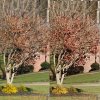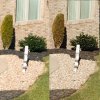- Joined
- Oct 16, 2016
- Messages
- 720
- Reactions
- 612
- Age
- 74
I did some tests with Jpeg and RAW images from the Mavic. It is obvious that the Mavic is applying over aggressive noise reduction even when you have sharpness set to +1.
Here is a comparison of Jpeg VS RAW. These are 100% crops from the full size images. Click on the thumbnail to expand the image and then click the arrow in the upper right corner to open in a new window.

Here is a comparison of Jpeg VS RAW. These are 100% crops from the full size images. Click on the thumbnail to expand the image and then click the arrow in the upper right corner to open in a new window.

Last edited:














